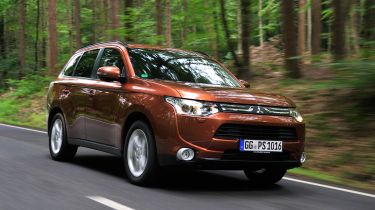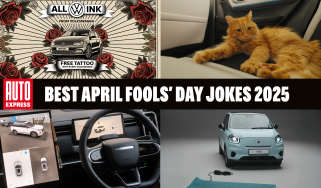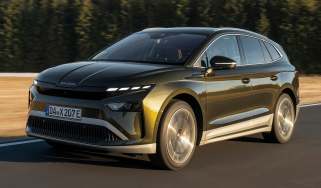Mitsubishi Outlander
All-new Mitsubishi Outlander is cleaner, more economical and has a more practical interior

If you value practicality, then the seven-seat Outlander has plenty of it. The versatile and robust cabin has space to rival full-sized SUVs and compact MPVs. The fact that it’s quieter, more comfortable and uses less fuel than before also appeals, but the driving experience is average. We’ll have to wait until prices and specifications are confirmed before we can assess its value for money.
Mitsubishi is set to launch a host of new cars over the next four years, and the first model to arrive is the third-generation Outlander. It’s all-new from the ground up, and the platform has been designed to accommodate a plug-in hybrid system.
While the technology sounds impressive, the hybrid isn’t ready yet, so only conventional power is available for now. Our test car featured a revised 2.2-litre diesel, mated to a permanent four-wheel- drive system. Is it good enough to worry the SUV class leaders?
The Outlander looks bigger than the car it replaces, but it takes up no more space on the road. It’s lighter, too – by 105kg – while interior packaging is also improved.
There’s masses of space inside, and rear legroom is generous even with the front seats pushed back. The second row splits, slides and folds, giving either a flat 1.69m long load space (34cm longer than before) or generous passenger room.
Used - available now

2019 Volkswagen
Golf
103,461 milesAutomaticDiesel1.6L
Cash £8,999
2013 Mercedes
B-Class
97,000 milesAutomaticDiesel1.8L
Cash £5,499
2021 Hyundai
Ioniq hybrid
51,104 milesAutomaticPetrol1.6L
Cash £12,710
2025 Land Rover
Defender 90
29,453 milesAutomaticDiesel3.0L
Cash £51,990Third-row seating is more substantial than the token effort in the old car: the two seats fold under the floor, and leave a reasonable boot when they’re in use. So practicality is a big draw, and materials are also of a greater quality than before.
Rivals include everything from the Honda CR-V and Toyota RAV4 to the Kia Sorento and new Hyundai Santa Fe. The Outlander is unremarkable to drive, although Mitsubishi’s efforts to improve refinement have ensured the engine is pretty quiet. It’s an unusual diesel, as it likes to rev like a petrol engine, rather than relying on low-down torque.
The six-speed manual gearbox shifts cleanly enough, and while the suspension can fidget over broken surfaces, comfort is generally good. Its softness does result in plenty of roll in corners, and the steering is light on feel, so the Outlander isn’t especially involving to drive.
In the UK, the Outlander will only be offered as a 4x4. That denies us the lowest emitting front-wheel-drive models available in other regions, but the 4x4’s 146g/km CO2 rating and 50.4mpg economy are very good.
That’s been achieved thanks to the 105kg weight loss, a stop-start system, low rolling resistance tyres, electric power-steering and a more slippery shape with reduced drag.
Mitsubishi has yet to confirm equipment, saying only that it will be generous, and follow the existing GX3, GX4 and GX5 trims. Expect the GX5 to include Mitsubishi’s new lane control system, a powered tailgate, a collision control system, parking camera and active cruise control.
Safer, more economical and significantly more spacious than before, the Outlander has what it takes to make a bigger impact in the UK, although its sober looks might count against it.







